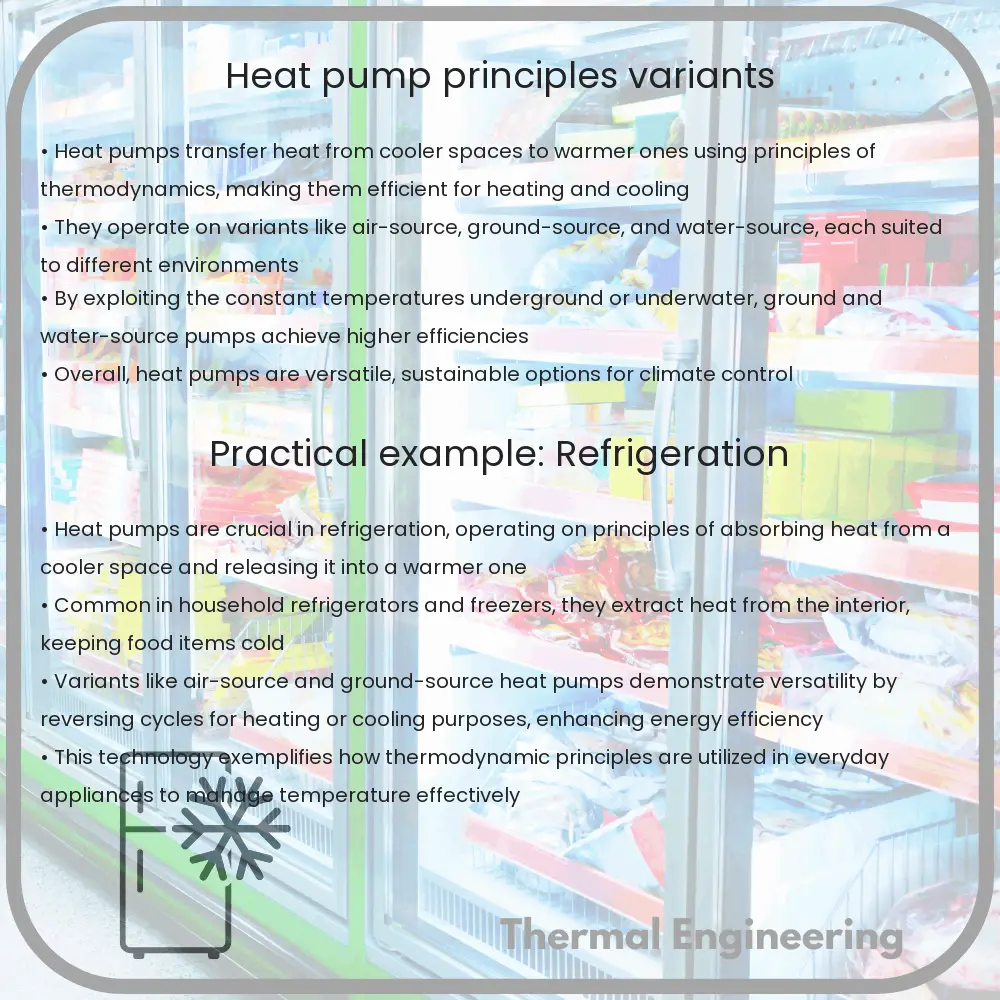Learn how heat pumps operate, their different types, and applications in heating and cooling systems.

Understanding Heat Pumps: Principles and Variants
Heat pumps are a fascinating and essential technology used to transfer heat from one place to another, utilizing a small amount of external energy. By exploiting the principles of thermodynamics, heat pumps efficiently maintain heating and cooling in buildings and are also used in various industrial processes. In this article, we’ll explore the basic principles of heat pumps, their different types, and their applications.
How Do Heat Pumps Work?
At its core, a heat pump moves thermal energy opposite to the direction of spontaneous heat flow by absorbing heat from a cold space and releasing it to a warmer one. The operation of a heat pump involves four main components: the evaporator, the compressor, the condenser, and the expansion valve. The process follows these general steps:
- Evaporation: A refrigerant absorbs heat from the environment in the evaporator, causing it to change from a low-pressure liquid to a vapor.
- Compression: The vapor is compressed by the compressor, which increases its pressure and temperature.
- Condensation: The heated vapor travels through the condenser, where it releases the absorbed heat and changes back into a liquid.
- Expansion: The high-pressure liquid passes through the expansion valve, reducing its pressure and cooling it down before it returns to the evaporator, thereby completing the cycle.
The efficiency of heat pumps is often measured by the Coefficient of Performance (COP), which is the ratio of heat output to the work input:
COP = Heat Output / Electrical Energy Input
Types of Heat Pumps
There are several variants of heat pumps, designed to suit different applications and environments:
- Air Source Heat Pumps (ASHPs): These are the most common type, which extract heat from the outside air, even in cold weather. They are generally used for heating buildings.
- Ground Source Heat Pumps (GSHPs): Also known as geothermal heat pumps, they extract heat from the ground. This type is more efficient than ASHPs as the ground temperature is more stable than air temperature.
- Water Source Heat Pumps: These systems extract heat from water sources, such as lakes, rivers, or ponds. Similar to GSHPs, the temperature of water sources are typically more stable, offering efficiency benefits.
- Hybrid Heat Pumps: These combine features of air and ground source systems, and can select the most efficient source based on temperature conditions.
- Absorption Heat Pumps: Powered by heat sources such as natural gas or solar energy, rather than by electricity, these are particularly useful in industrial settings where waste heat is available.
Applications of Heat Pumps
Heat pumps are versatile technologies used in a variety of settings:
- Residential Heating and Cooling: Heat pumps offer an effective and energy-efficient method for regulating the temperature in homes.
- Commercial Buildings: Large scale heat pumps are implemented in commercial settings for both heating and cooling large buildings.
- Industrial Heat Recovery: Industrial heat pumps are used in manufacturing to recover heat from exhaust gases or other waste heat sources, reducing the overall energy consumption.
- Water Heating: Heat pump water heaters are used in both residential and commercial settings to efficiently provide hot water.
In summary, heat pumps represent a critical tool in the quest for energy efficiency and environmental sustainability. By understanding the basic principles and the various types of heat pumps, one can appreciate the engineering and environmental considerations that go into constructing systems for heating and cooling across different climates and building types.